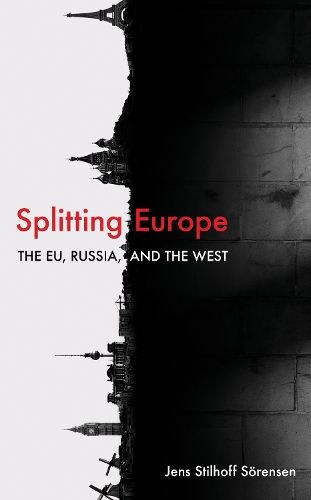Readings Newsletter
Become a Readings Member to make your shopping experience even easier.
Sign in or sign up for free!
You’re not far away from qualifying for FREE standard shipping within Australia
You’ve qualified for FREE standard shipping within Australia
The cart is loading…






Europe today is deeply divided. Thirty years after the end of the Cold War and the celebratory moment when the wall came down, we are again faced with a new Cold War with Russia-Western relations probably more dangerous than ever since the Cuban missile crisis. Diplomatic relations are frozen, sanctions installed, the old arms treaties abandoned (ABM, INF), and new nuclear weapons developed (Supersonic etc.). Indeed, we are arguably in a new nuclear arms race. Further, Russia and the U.S. are involved in proxy wars in Syria and Ukraine, in the sense of supporting opposing sides in these conflicts.
The EU Europe itself is divided. It is not just Brexit, marking the first real break-away from the Union, but also clashes within. In the heart of Paris, the yellow vests are now well over a year into continuing violent demonstrations. So-called populist movements have been on the rise across the continent. The Visegrad countries (Hungary, Poland, Slovakia, Czech Republic) are regularly at odds with the EU core (Brussels and the France-Germany axis) to a degree where the idea of sanctions is sometimes invoked. The Western security framework appears to break down, with Turkey, a NATO member and with the organisations second largest military numerically, beginning to purchase Russian weapon systems (S-400) and enter a strategic alliance with Russia and Syria in the Middle East.
How did it come to this and what happened with the post-Cold War dream? And what has happened to the post world war visions of European integration and security order? What are the critical processes and events that have led us unto this path? This book aims to address and explore these historical problems.
$9.00 standard shipping within Australia
FREE standard shipping within Australia for orders over $100.00
Express & International shipping calculated at checkout
Europe today is deeply divided. Thirty years after the end of the Cold War and the celebratory moment when the wall came down, we are again faced with a new Cold War with Russia-Western relations probably more dangerous than ever since the Cuban missile crisis. Diplomatic relations are frozen, sanctions installed, the old arms treaties abandoned (ABM, INF), and new nuclear weapons developed (Supersonic etc.). Indeed, we are arguably in a new nuclear arms race. Further, Russia and the U.S. are involved in proxy wars in Syria and Ukraine, in the sense of supporting opposing sides in these conflicts.
The EU Europe itself is divided. It is not just Brexit, marking the first real break-away from the Union, but also clashes within. In the heart of Paris, the yellow vests are now well over a year into continuing violent demonstrations. So-called populist movements have been on the rise across the continent. The Visegrad countries (Hungary, Poland, Slovakia, Czech Republic) are regularly at odds with the EU core (Brussels and the France-Germany axis) to a degree where the idea of sanctions is sometimes invoked. The Western security framework appears to break down, with Turkey, a NATO member and with the organisations second largest military numerically, beginning to purchase Russian weapon systems (S-400) and enter a strategic alliance with Russia and Syria in the Middle East.
How did it come to this and what happened with the post-Cold War dream? And what has happened to the post world war visions of European integration and security order? What are the critical processes and events that have led us unto this path? This book aims to address and explore these historical problems.